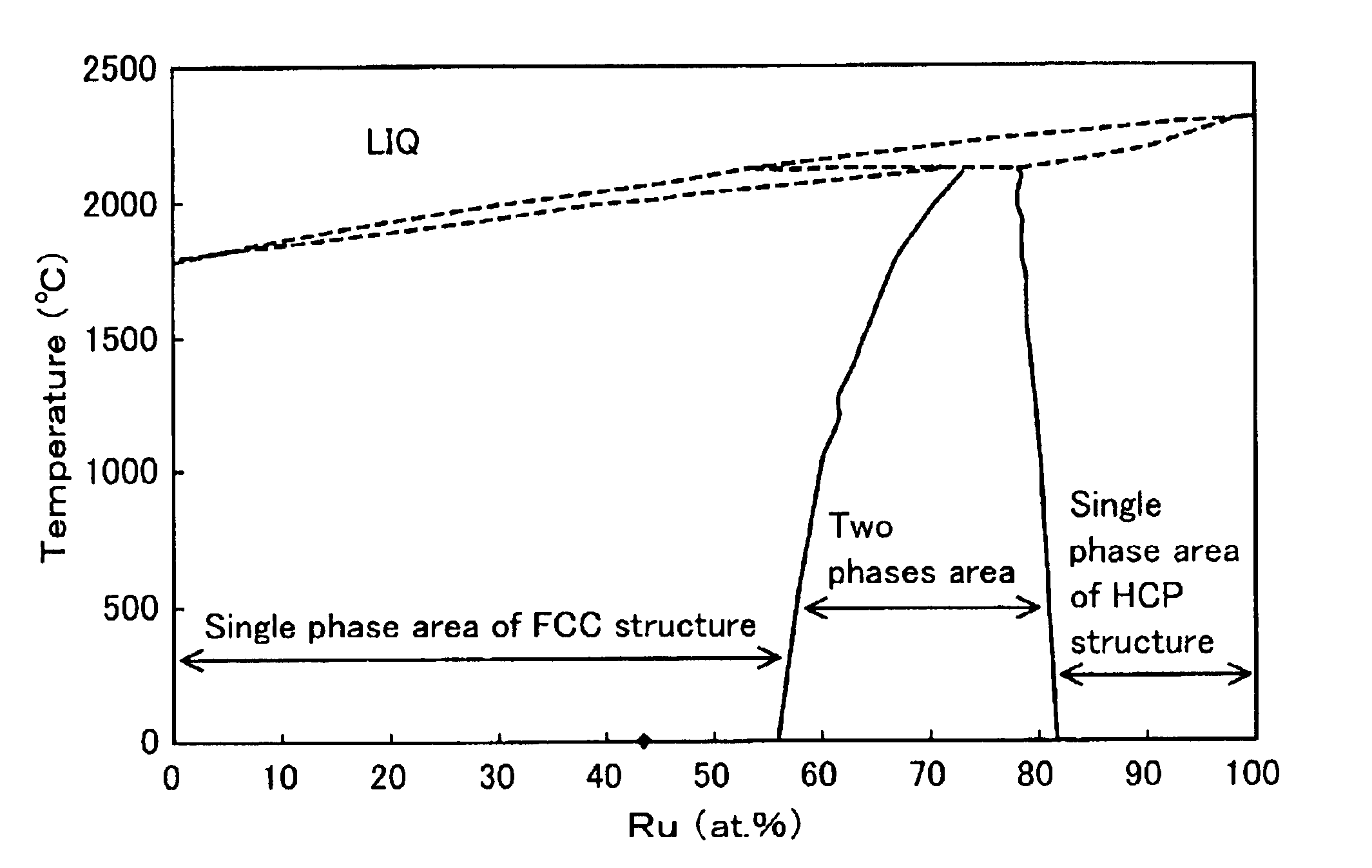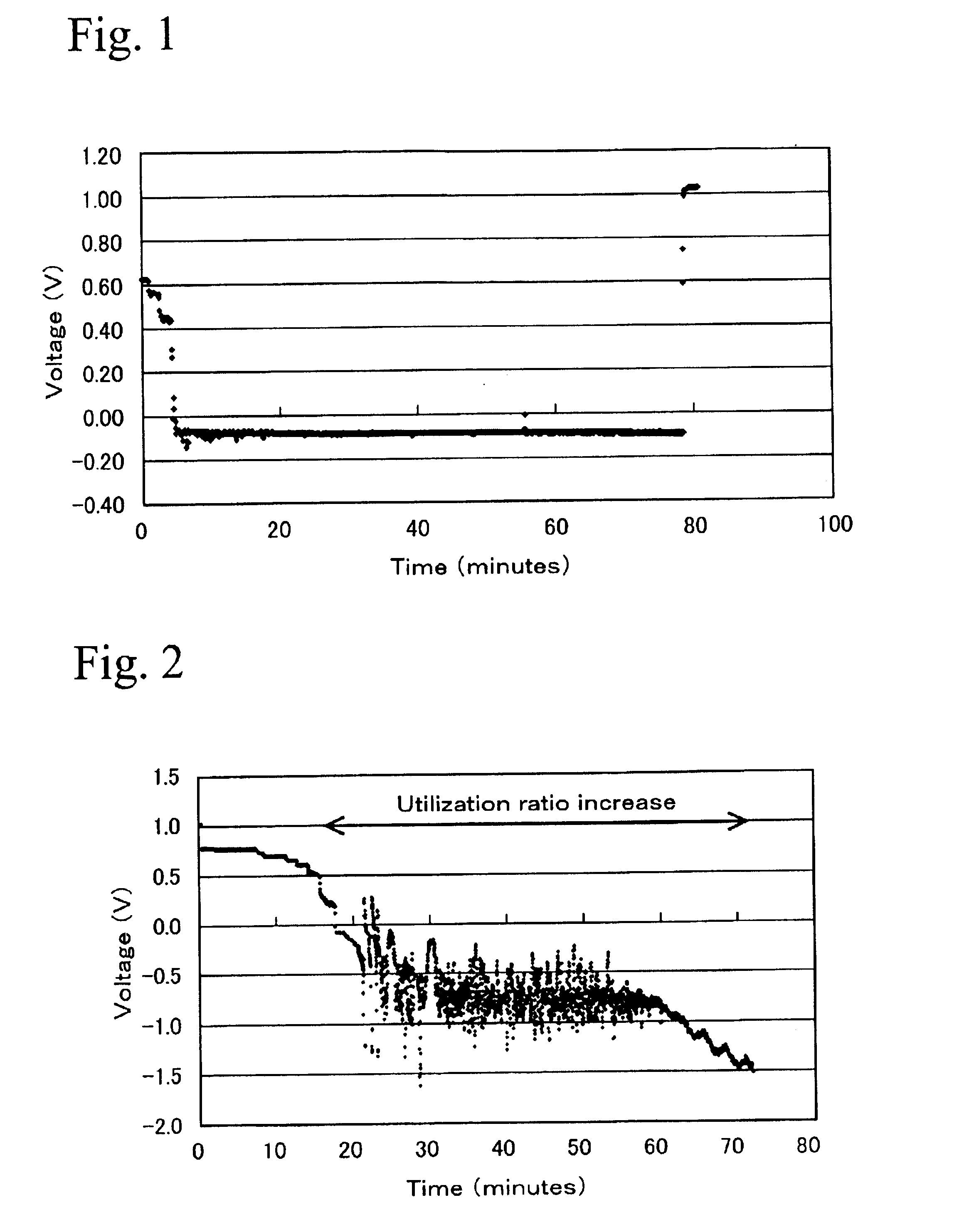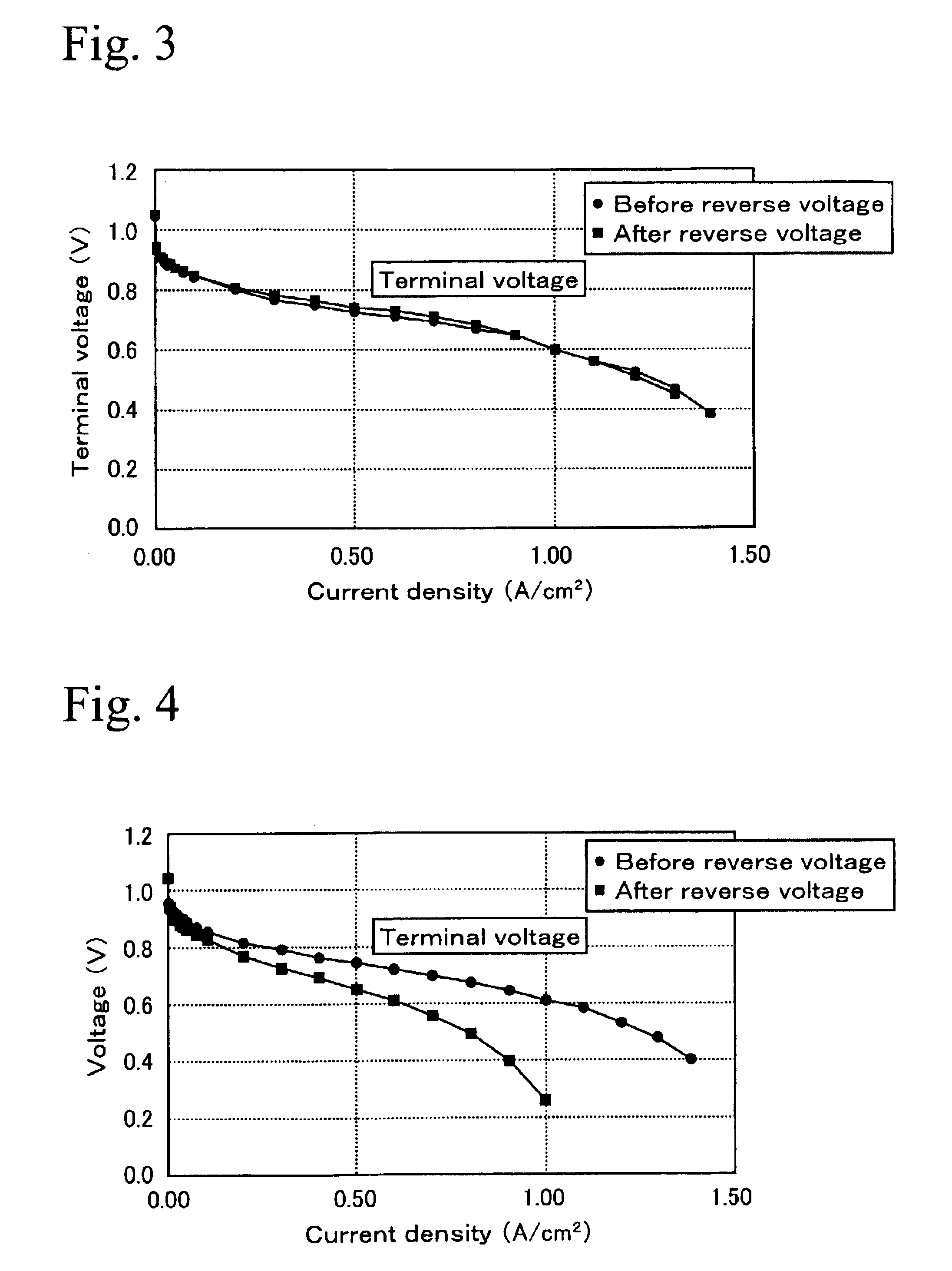Membrane electrode assembly for polymer electrolyte fuel cell
a fuel cell and membrane electrode technology, applied in the direction of cell components, basic electric elements, electrochemical generators, etc., can solve the problems of insufficient deterioration of generation efficiency, reduced water-discharging ability of membrane electrode assemblies, carbon particle corrosion, etc., to achieve stable existence, maintain carbon monoxide poisoning resistance, reduce the effect of ru leaching
- Summary
- Abstract
- Description
- Claims
- Application Information
AI Technical Summary
Benefits of technology
Problems solved by technology
Method used
Image
Examples
Embodiment Construction
Next, the present invention is explained in detail by showing examples.
1. Preparation of Membrane Electrode Assembly
After 4500 g of dinitrodiamine platinum nitric acid solution (containing 1.5% of platinum) and 100 g of carbon blacks (Ketienblack EC) were mixed together, and platinum was carried by the carbon blacks by adding ethanol as a reducing agent.
Next, after 35.96 g of ruthenium chloride solution (containing 8.232% of ruthenium) and 710 ml of water were mixed together, 9.5 g of the carbon blacks carrying platinum described above was added, and ruthenium was also carried by the carbon black by adding ethanol. The ratio of platinum and ruthenium can be controlled by changing the amount of ruthenium in ruthenium chloride solution or the amount of mixed solution. The ratio of Pt:Ru in this example was processed to 40:60. The carbon blacks carrying Pt and Ru in the ratio of 40:60 was maintained at 1200° C. for 6 hours in an atmosphere of nitrogen gas, and cooled rapidly to process...
PUM
| Property | Measurement | Unit |
|---|---|---|
| temperature | aaaaa | aaaaa |
| terminal voltage | aaaaa | aaaaa |
| voltage | aaaaa | aaaaa |
Abstract
Description
Claims
Application Information
 Login to View More
Login to View More - R&D
- Intellectual Property
- Life Sciences
- Materials
- Tech Scout
- Unparalleled Data Quality
- Higher Quality Content
- 60% Fewer Hallucinations
Browse by: Latest US Patents, China's latest patents, Technical Efficacy Thesaurus, Application Domain, Technology Topic, Popular Technical Reports.
© 2025 PatSnap. All rights reserved.Legal|Privacy policy|Modern Slavery Act Transparency Statement|Sitemap|About US| Contact US: help@patsnap.com



